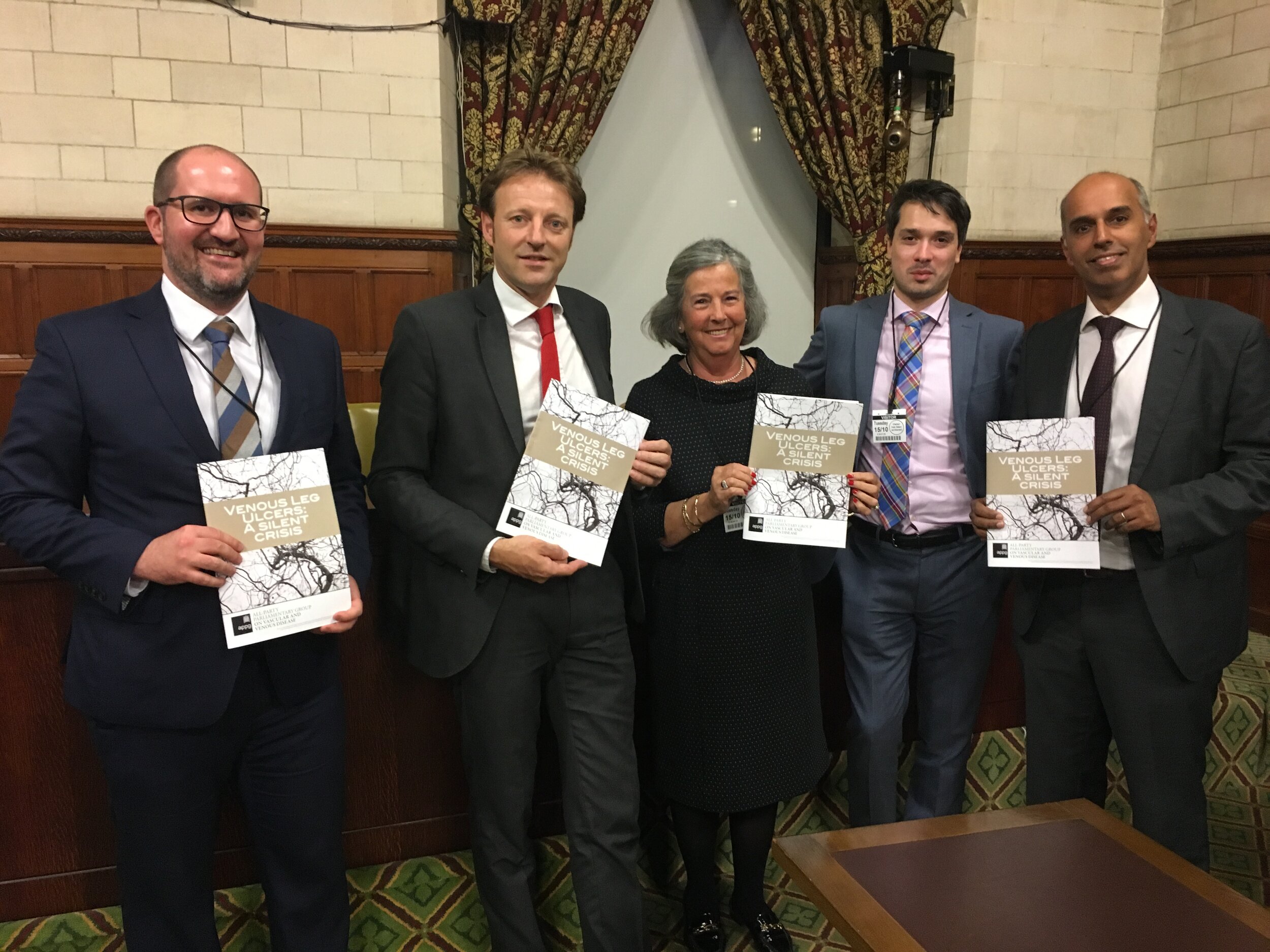To mark World Thrombosis Day on 13th October 2021, the All-Party Parliamentary Group on Vascular and Venous Disease has released an infographic which sets out key information about Venous Thromboembolism (VTE). The APPG will be using the infographic to raise awareness of VTE and its impact on patients.
VVAPPG Holds Latest AGM
The All-Party Parliamentary Group on Vascular and Venous Disease held its AGM on 3rd March 2021, electing Emma Hardy, Labour MP for Kingston upon Hull West and Hessle as the Group’s Chair. Sir Peter Bottomley MP, Baroness Masham of Ilton, Ruth Jones MP, Baroness Watkins of Tavistock and Rachel Hopkins MP were elected as Officers of the Group.
Full minutes from the meeting can be found here.
APPG Discusses Inequalities in Arterial Care
The APPG on Vascular and Venous Disease hosted its latest meeting in December 2020.
This meeting served as an opportunity for parliamentarians and healthcare professionals to discuss the ongoing inequities in timely access to care presented to people with peripheral arterial disease who do not have a diagnosis of diabetes, and explore the opportunities to improve lower limb amputations rates in England.
The meeting will began with a short clinical presentation, followed by a roundtable discussion. This discussion was chaired by the Chair of the All-Party Parliamentary Group on Vascular and Venous Disease, Emma Hardy MP.
The minutes of the meeting are available here.
APPG Hosts Remote Meeting to Mark Vascular Awareness Month
In tandem with Vascular Awareness Month, the VVAPPG sought to raise awareness on the impact of venous disease to the thousands afflicted by it across England. The meeting facilitated a conversation between venous healthcare professionals, patients, and policy makers on the human consequences of poor access to care and discussed what actions may help improve people’s experience of care and health outcomes.
The minutes of the meeting can be read here.
APPG Hosts Remote Meeting on Vascular and Venous Care
Emma Hardy MP chaired a remote meeting of the All-Party Parliamentary Group on Vascular and Venous Disease to share and discuss existing barriers in access to treatment, and their impact to patient outcomes in people with vascular disease. Ms Hardy stated that the conclusions of the meeting would be synthesized to create some clear, short-term messages for the Government regarding action that can be taken to address the issues raised.
The minutes of the full meeting can be read here.
APPG holds latest AGM
The All-Party Parliamentary Group on Vascular and Venous Disease held its AGM on 29th January 2020, electing Emma Hardy, Labour MP for Kingston upon Hull West and Hessle as the Group’s Chair. Sir Peter Bottomley MP, Baroness Masham of Ilton and Dame Diana Johnson MP were elected as Officers of the Group.
Full minutes from the meeting can be found here.
APPG launches new report: Venous Leg Ulcers, A Silent Crisis
On the 15th October 2019, the APPG on Vascular and Venous Disease launched its first report into venous disease: Venous Leg Ulcers, A Silent Crisis. The report draws on evidence collected over the course of the past year to paint a clear picture of poor patient outcomes, unpredictable treatment pathways and significant cost to the NHS.
The report lays out a number of policy recommendations for the NHS to consider. It sets out a vision for improving the patient pathway in order to ease the high burden of this condition to the quality of life of thousands, and reduce the long term burden on the NHS.
APPG launches new report: Saving Limbs, Saving Lives
On the 5th February 2019, the APPG on Vascular and Venous Disease launched its latest report on the inequalities in lower limb amputation rates. Saving Limbs, Saving Lives: A Call to Action to Reduce Inequalities in Lower Limb Amputation Rates highlights the national amputation and ulcer challenge and provides a blue print for how this can be tackled.
The report highlights that every hour, in England, someone over 50 has a minor (partial foot) amputation. Every two hours someone loses their whole leg. These are life changing events which increase a patient’s chance of further co-morbidities, a drastically reduced quality of life and premature death.
The majority of lower limb amputations are a result of foot ulcers. This report identifies four areas of inequality in access to treatment and outcomes for patients:
Diabetes: Whilst the national focus is diabetic foot ulcers, half of all amputations are in people that do not have diabetes.
Gender: Leg ulcers are three times more common than diabetic foot ulcers, and twice as common in women as men.
Where you live: There is a North/South divide with major amputation rates 30% higher in Northern England compared with the South.
Ethnicity: Amputation rates are 70% higher in the Black as compared to the White populations of England. In contrast, the amputation rate in the South Asian population is 40% lower than the White population in England.
The well-attended event brought together healthcare professionals and parliamentarians to discuss how to gain consensus on and promote a unified model for early diagnosis, intervention and treatment of lower limb ulcers to prevent amputation.


